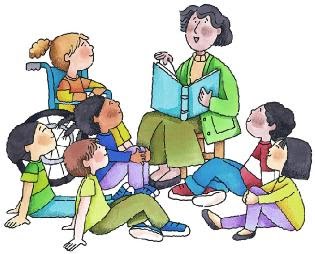 Martina Rocha passed us this
information:
Martina Rocha passed us this
information:You know the great responsibility that we have tin our child care work. A few seconds of carelessness can cost us a lot of problems and we can put ourselves in serious situations.
I say this because the last week, at home of a provider who lives the south of Chicago, it was a very serious accident due to a cell, yes, a cell phone!
When you are working or your assistant, or your son, or daughter, husband, or wife, whoever is working in the area of childcare, he is responsible for what he is doing: SHOULD NOT BE SEND OR READ TEXT MESSAGES OR CHECK YOUR INTERNET IN YOUR CELL IN WORKING HOURS.
It's like if you're working in an office, or a factory, or building, or if you are driving distracted an accident can happen or be involved in a situation of risk or danger.
This is what happened the last week in South Chicago: a provider, by being sending and checking her text messages when she was taking care of the children, she did not realize that a big boy flopped over a very young child and breath was leaving, the little boy could not stand to save on the situation, when she realized that the child was purple and he was not breathing. A few seconds more, and he would have died!
It only need seconds for an accident to happen, so I wanted to share with you this information
LET THE USE OF PHONES WHEN WE ARE WORKING; IN CASES OF EMERGENCY ONLY
Martina Roche Ph # 847 630-1273
Founder / President Together for Childhood Network / Juntos por la niñez
As stated by Martina, if you
are working, you are working. You can’t use your phone, you can’t watch
Telenovelas, talk by phone with friends ... There are people who think that take
care of children is just have them at home and say "NO!" every time
they do something dangerous or disturbed. That seems easy, but it is not. The children
require constant attention, they get bored and create problems, and the person
who wants to see the soap has to constantly interrupt, she feel frustrated.
30 years ago my wife and I
were in Spain
a child care center in which we took care of 62 children, and we had no
television, but never had more than 50 at a time. We were only 2 and a person
who came in the morning to change 6-8 babies and give them bottles. My wife was
busy making food, they need help going to the bathroom, help me to distribute
material to change activities, and when he had to intervene because a child was
creating problems. How could we do?: Having clear rules of what children could
and could not do, and above all always applying my golden rule: "All
children must be populated doing something they enjoy doing." They were
always in a structured activity, alternating activities shaky energy spent
restful activities, and when a third of the children began to not be interested
in the activity, I knew it was time to change activities. It was supposed to
change activities every 20 minutes or half an hour, but every evening, to
deliver the last child prepared everything for the next day. We opened at 7, we
closed at 5, and the day grew short. We ended up tired and happy, full of
energy.
If child care becomes difficult, think...
Am I really working, busy
only in my business?
Do I have clear and simple rules-for children and parents-, and I comply ever?
Do I have my written rules? Have I made known?
Have I created routines, and the children pass easily from one activity to another?
Every day, at the end, I make all that I'll do the next day?
Are my children always busy doing something that they like?
Do I have clear and simple rules-for children and parents-, and I comply ever?
Do I have my written rules? Have I made known?
Have I created routines, and the children pass easily from one activity to another?
Every day, at the end, I make all that I'll do the next day?
Are my children always busy doing something that they like?
